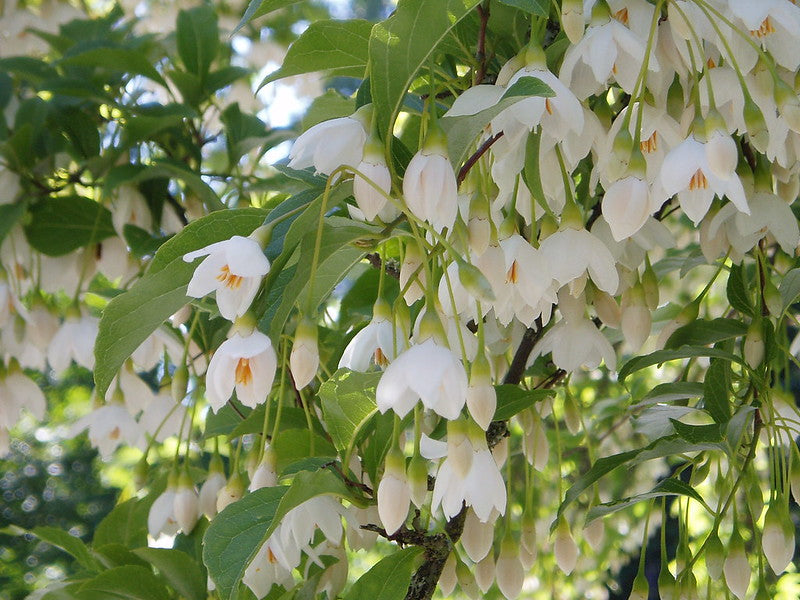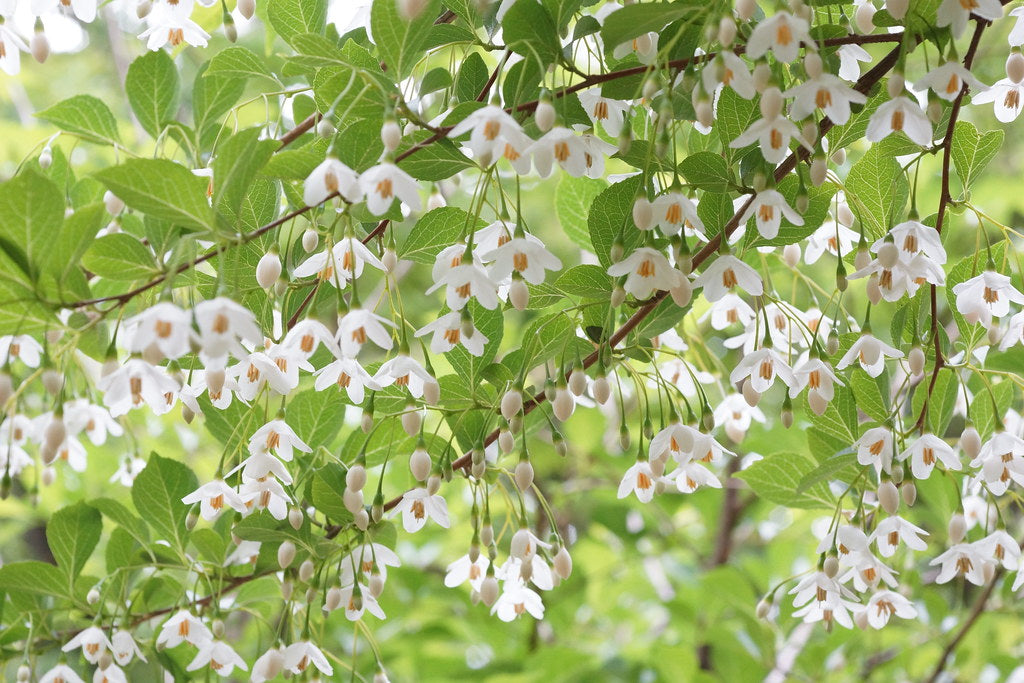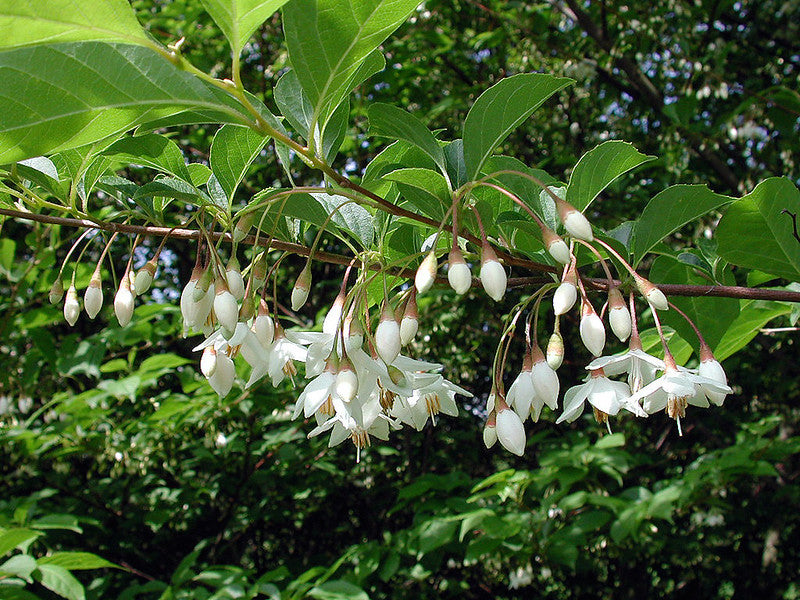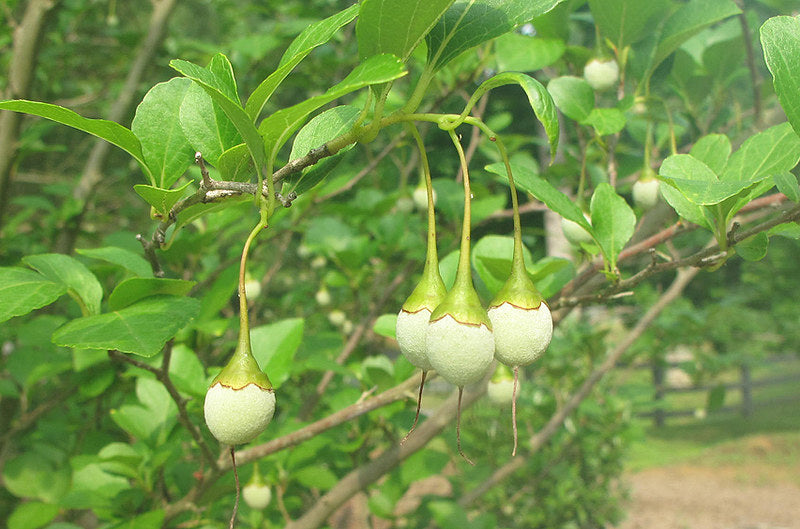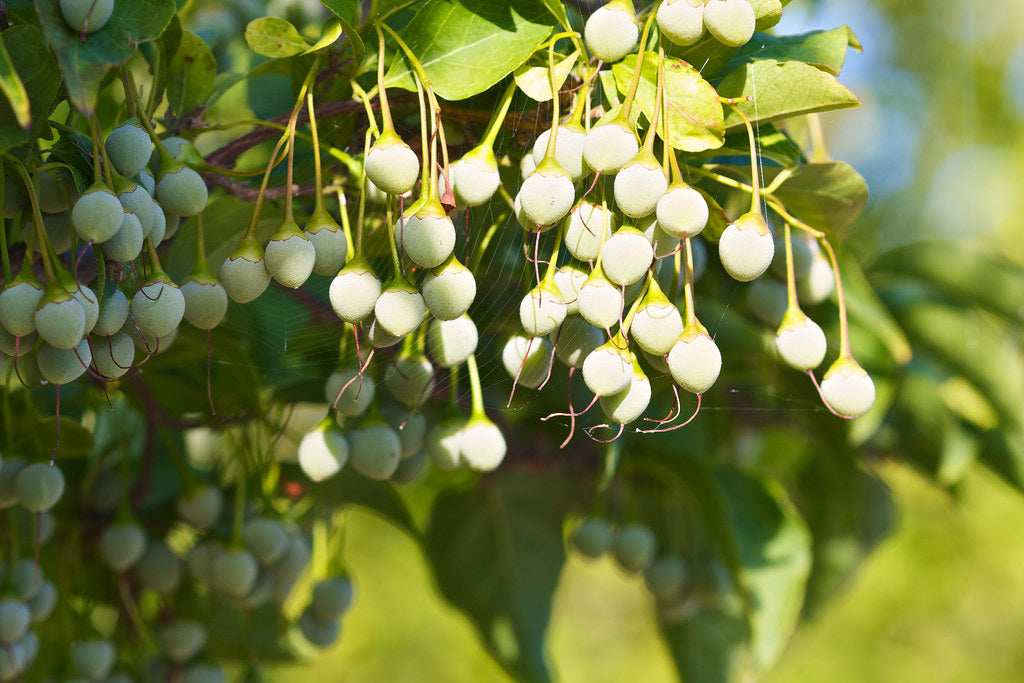Floridaseeds
Japanese Snowbell Styrax japonicus 10 Seeds USA Company
Japanese Snowbell Styrax japonicus 10 Seeds USA Company
Couldn't load pickup availability
Styrax japonicus, commonly known as Japanese snowbell, is a small deciduous tree native to East Asia, particularly Japan, China, and Korea. It belongs to the Styracaceae family. Here's a description:
Appearance: The Japanese snowbell typically grows to a height of 20 to 30 feet (6 to 9 meters), though it can sometimes reach up to 40 feet (12 meters) in optimal conditions. It has a rounded crown and a graceful, spreading habit. The bark is smooth and grayish-brown.
Leaves: The leaves are alternate, simple, and oval-shaped, with serrated edges. They are dark green in color and turn yellow in the fall before dropping.
Flowers: One of the most distinctive features of the Japanese snowbell is its bell-shaped, pendulous white flowers that hang in clusters from the branches. These fragrant flowers typically appear in late spring to early summer (May to June), adding charm and elegance to the tree. Each flower has five petals and a yellow center.
Fruit: After flowering, small, round, green fruits develop. These fruits are not particularly showy and are typically not ornamental.
Cultural Significance: Styrax japonicus is prized in landscaping for its attractive appearance and fragrant flowers. It is often used as a specimen tree in gardens, parks, and urban landscapes. Its graceful form and delicate flowers make it a popular choice for ornamental planting.
Growing Conditions: Japanese snowbells prefer moist, well-drained soil and partial shade to full sun. They are relatively low-maintenance once established but may require regular watering, especially during hot and dry periods. They are hardy in USDA zones 5 to 8.
Landscape Use: Styrax japonicus is commonly used in mixed borders, woodland gardens, and as a focal point in smaller landscapes. It pairs well with other shade-loving plants and provides a beautiful backdrop for spring flowering bulbs.
Growing Instructions
The seeds have a period of dormancy. They can be planted in the fall for spring germination or they can be cold stratified to simulate winter conditions and to break their dormancy.
- Scarify the seeds by nicking or sanding the seed coat.
- Soak the seed in water for several hours.
- Place the seeds in a plastic bag and seal it. Store the bag in a refrigerator for two months.
- Fill a pot with potting soil.
- Sow the seeds on the soil and cover them with a thin layer of soil.
- Water the container and leave it to drain.
- Put the pot in a warm, sunny area.
- Water the pot regularly so that the soil is moist but not wet.
- The seedlings can be transplanted when they are a few inches tall.
Materials
Materials
Shipping & Returns
Shipping & Returns
Dimensions
Dimensions
Care Instructions
Care Instructions
Share

